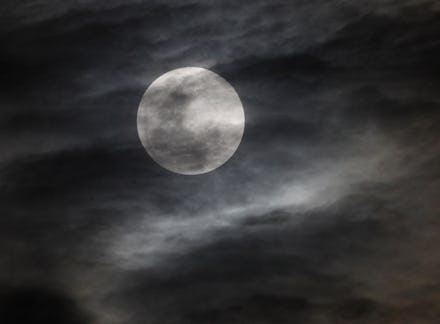Lunar Eclipse February 2017: Time, where to watch, best viewing spots and more

The Western Hemisphere will be treated to a special celestial sight this Friday night, as a lunar eclipse takes place in the night sky.
The penumbral lunar eclipse will coincide with the "snow moon," a term used to describe February's full moon because of the month's high snow average. Additionally, more eagle-eyed sky watchers may catch a glimpse of a comet during the predawn hours, making Feb. 10-11 a particularly exciting time for celestial events.
Here's what to know about Friday's lunar eclipse.
What is a penumbral lunar eclipse?
A lunar eclipse takes place during a full moon approximately two to five times a year, when the earth lines up between the sun and moon, making the moon appear in its shadow.
In contrast to a total or partial lunar eclipse, which occur when the inner shadow (umbra) of the earth appears on the face of the moon, a penumbral lunar eclipse takes place when only the outer shadow of the earth, the penumbra, falls on the moon.
The more diffused nature of the penumbra means that these lunar eclipses are far more subtle. To most onlookers, the moon will simply appear to have a subtly dark shading on its surface, rather than the more dramatic shadow produced by a total or partial eclipse.
However, according to Space.com, Friday's penumbral eclipse will be more striking than most, as the moon will recede deeply enough into the earth's shadow to submerge it almost entirely in the shade.
When to see it
Friday's lunar eclipse will take place over the course of about four hours, from 5:32 p.m. to 9:55 p.m. Eastern time. The lunar eclipse will reach its peak at 7:44 p.m., making that the best time to catch a glimpse of this rare sight.
The eclipse, however, won't be visible for that entire four hour span.
"The outer part of Earth's penumbra is so pale that you won't notice anything until the Moon's edge has slid at least halfway in," Alan MacRobert, a senior editor at Sky & Telescope magazine, said in a statement. "So start looking about 90 minutes before mid-eclipse."
After the eclipse's peak, the lunar eclipse should be visible for approximately an hour after the mid-eclipse at 7:43.
How to see it
The lunar eclipse will be visible from much of the world, with the exception of Australia, New Zealand, East Asia and Hawaii.
The best views of the eclipse will be available from Europe, Africa and the eastern side of South America. The best view, NASA research scientist Noah Petro told Space.com, would be "on a cruise ship in the middle of the Atlantic Ocean."
Those of us in the U.S., however, will have the best luck seeing it from the East Coast, where the eclipse will be viewable in its entirety. Viewers in the Midwest and West Coast will miss out on the beginning of the eclipse, as the full moon will still be rising during the eclipse peak.
To find the best viewing spot for Friday's lunar eclipse, consult the Light Pollution Map to discover where the night sky will be clearest to see in your area.
Those who can't see the lunar eclipse in person can also watch it online through the Slooh Community Observatory's livestream, which is available here.